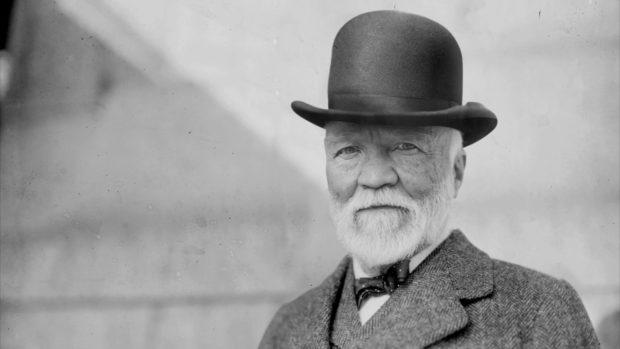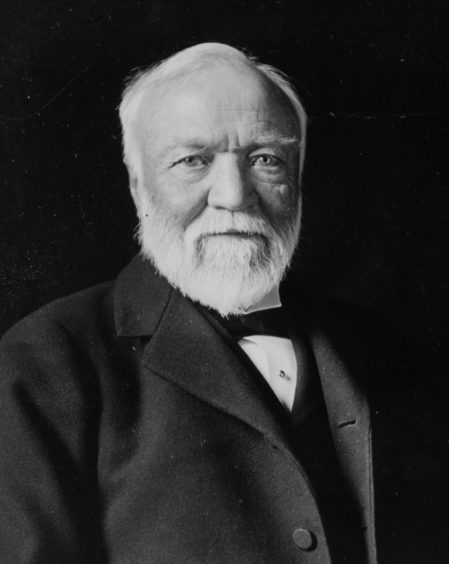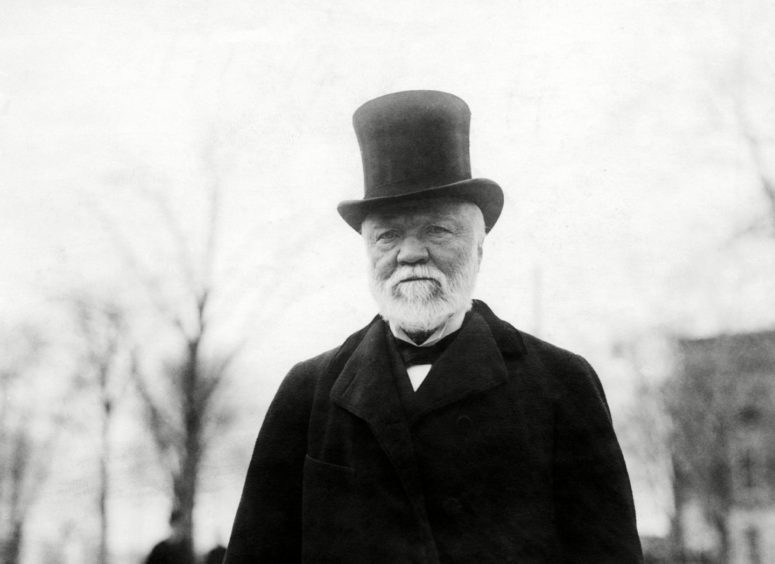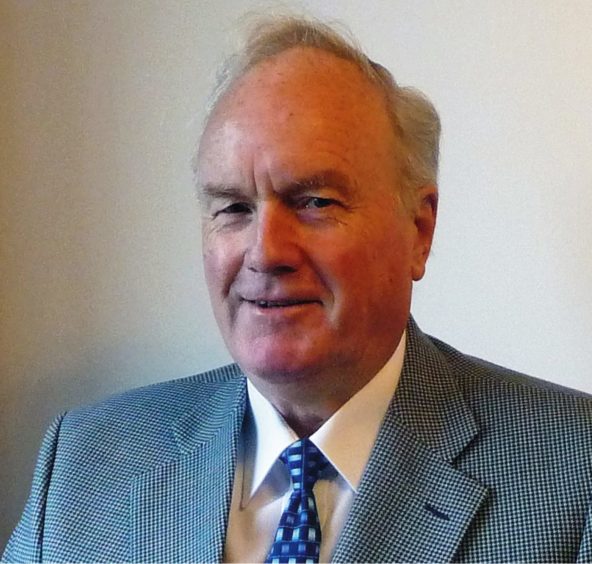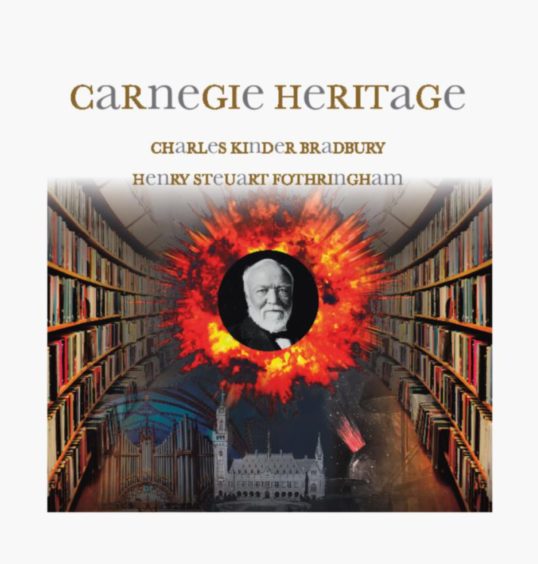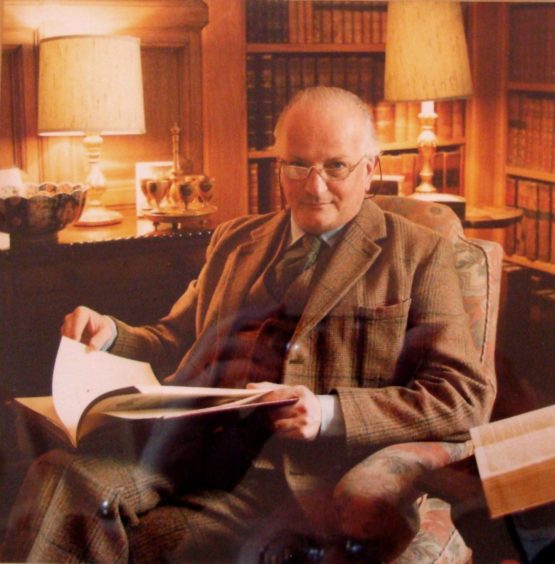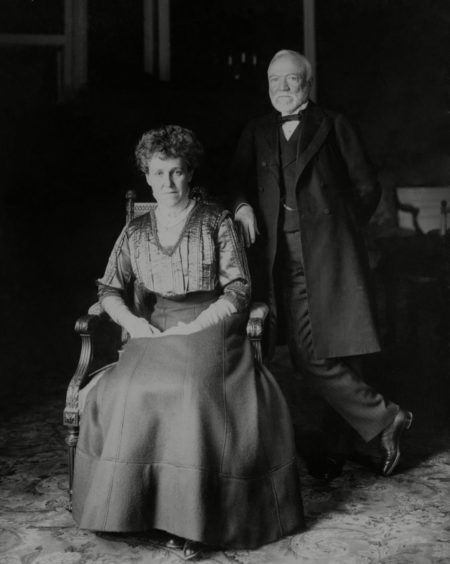New perspectives about Fife-born philanthropist Andrew Carnegie are featured in an illustrated new book inspired by the centenary of his death. Michael Alexander finds out more from the authors.
He was the Dunfermline-born American magnate who amassed a $480 million fortune in the steel industry then became a major philanthropist.
More than 100 years after the death of Andrew Carnegie on August 11, 1919, there is more interest than ever in the legacy of the man who spent more than 70% of his collected fortune on establishing around 2,800 public libraries around the globe, donated more than 7,600 organs to churches worldwide and endowed organisations dedicated to research in science, education and world peace.
Among his gifts was the $1.1 million required for the land and construction costs of Carnegie Hall, the legendary New York City concert venue that opened in 1891. His legacy also lives on in Fife.
However, for authors Charles Kinder Bradbury and Henry Steuart Fothringham, who have just published a new book called Carnegie Heritage, the centenary of Carnegie’s death also identified an entrepreneurial “niche of opportunity”.
Inspiration for book
Charles, of Cupar, Fife, explains: “When my co-author and I were looking around for another project along the lines of our previous Heritage Series publications, Andrew Carnegie’s name was present in the news. It was the centenary of his death and there was much commemoration in Dunfermline, the town of his birth.
“I stay in Cupar, not far away. The proximity of the Andrew Carnegie Birthplace Museum and other Carnegie landmarks made the remarkable man’s story easy to research and well worth looking into.
“The various aspects of his life and legacies seemed to fit very well into the style of book which we have developed.
“No biography of Carnegie consulted appeared to tackle the complex subject in an organised and well-illustrated way, and this provided a niche of opportunity.
“Henry Fothringham’s interest as an historian was aroused by his distant relationship with the Carnegies.”
Through their research, the authors delved into the family origins of the Carnegies, which go back to 12th century Brittany, in northern France, and to the Scottish counties of Fife and Angus.
Andrew Carnegie was descended from David Carnegie, 1st Earl of Southesk. Exploring how Carnegie eschewed any idea of high birth, preferring to be seen as a poor weaver’s son, Carnegie Heritage brings into focus his family background and personal character, exploring his life and his unprecedented legacy of humanitarian foundations.
Asked what he found of greatest interest about Andrew Carnegie, Charles says the obvious answer is the vast number of libraries which he endowed worldwide.
However, coming from a scientific background, he has been most impressed by his contribution to many branches of science in the founding of the Carnegie Institution in Washington, now known as the Carnegie Foundation for Science.
His foresight in allowing his trustees in this and other foundations to support projects of ever-changing nature, he finds remarkable.
“For some people, Andrew Carnegie was a hero, for others a villain,” says Charles.
“My view is he was no doubt a hero. He was a man of his time. Like JD Rockefeller, JP Morgan and others, his actions nowadays may seem to have been selfish and avaricious.
“However, his philanthropic attitudes, instilled by his mother and Uncle Lauder, never left him.
The musical, ‘The Star-Spangled Scotchman’, addresses this enigma and I was fortunate to see a performance in Dunfermline, with Carnegie’s great-great-great grandson, Joe Whiteman, taking the lead role.”
In the foreword of the book, Joe Whiteman praises the “charismatic and clever” authors and says where he thinks Charles and Henry have excelled is in tackling not only often-repeated topics from new and interesting perspectives, but also bringing to light less-well-known facts about the great philanthropist.
Joe adds: “From reading this book I have learned a great deal about my ancestor’s life and his lasting heritage. Although I wouldn’t class myself as an academic, I very much appreciate the work the authors have put in to make this book very interesting and readable.”
The authors
Charles Kinder Bradbury is himself no stranger to an entrepreneurial tradition.
Born in Buenos Aires in 1942, the second of three sons of John (Jack) Charles and Florence (Mailer) Bradbury, he is an 11th generation descendant of Peter Bradbury, born circa 1639 in Saddleworth, Yorkshire.
From an early age, Charles learnt basic carpentry and practical skills from his grandfather Mailer, a senior engineer on the Argentine Railways, and who lived next door to the Bradbury family in Ardogue.
Charles attended St Alban’s College, Lomas de Zamora, and St George’s College, Quilmes in the Province of Buenos Aires.
He chose to study colour chemistry in England at the University of Manchester Institute of Science and Technology, from where he graduated BSc Tech in 1964.
At that time, academic research was not an option due to financial constraints, so he joined ICI’s Dyestuffs Division as a research chemist.
In Teeside, Charles met and married Naomi Felicity Pearson, born in Yorkshire.
Following 18 years of work for multi-national organisations in research, development and management, mostly overseas, he began to consider setting up his own company.
His cousin Sheila’s advice was memorable – ‘you wouldn’t be a Bradbury if you didn’t’!
The major part of his industrial chemistry career began, running his own venture in St Andrews and Cupar, with the primary focus on custom manufacture of fine organic chemicals for the pharmaceutical industry.
Retirement at the age of 65 presented him with an opportunity to fulfil a life-long dream to study for a PhD, and he was fortunate enough to be offered a place with Professor Goodby’s Liquid Crystal Group at the University of York.
Charles’ research focussed on the synthesis of novel tricyclic organic compounds, for potential application in liquid crystal materials for TV and other displays.
The fascinating aspect of the work, he says, was its multidisciplinary nature, with research in the fields of biology, physics and engineering as well as chemistry, and the evaluation of the compounds made by variable temperature microscopy.
Family heritage has always been of interest to Charles, who has enjoyed himself immensely in the past year researching the origins and tales about notable Bradburys throughout the world.
However, the multi-faceted life of Andrew Carnegie, his ancestry and remarkable legacies, have presented the perfect platform for this fifth book in the Heritage series.
Charles has been particularly fascinated by the many entrepreneurial activities of the Scots-American and the various branches of science which have benefitted from his philanthropic initiatives.
Henry Steuart Fothringham
Meanwhile, his co-author Henry Steuart Fothringham, OBE, can claim a distant family connection to Carnegie.
Born in Edinburgh in 1944, he was brought up at the family home in Angus immediately next to Lour, one of the ancient Carnegie properties in the county.
From his teenage years, Henry developed a strong inclination towards Scottish history and the material culture of Scotland.
Family history has always been an interest, and he is able to claim distant kinship with Andrew Carnegie through his paternal great-grandmother, Lady Charlotte Fotheringham, nee Carnegie, who was sister to James, 9th Earl of Southesk.
Henry has written numerous articles on family history topics and on Scottish silver in a variety of magazines.
He contributed to the Scottish sections of Jackson’s Silver and Gold Marks of England, Scotland and Ireland (1989) and Bradbury’s Book of Hallmarks (1991) and wrote with George Dalgleish Silver: Made in Scotland (2008).
Since 2004 he has been Hon Historian in the Convenery of the Trades of Edinburgh. He was a member of the Reviewing Committee on the Export of Works of Art (1982-1994) and of the government’s advisory committee on Works of Art.
In recent years, he has collaborated with Charles Bradbury on the Heritage book series covering the Bradburys, Stewarts, Incorporated Trades of Edinburgh and Tales from the Chemistry Lounge.
Feedback
Regarding the reactions they are getting to the latest Carnegie book, which took 18 months to research and write and two years to produce, Charles says the most enjoyable part of the project, from a personal point or view, was putting together the words, images, creating maps and diagrams and being involved in design which were “all great fun”.
Explaining why the book was designed and published in Poland, Charles says their experience in past projects in terms of costs and quality dictated that they stay loyal to their Polish collaborators. They have not been disappointed.
He adds: “It is early days but people who have received advance copies have been most enthusiastic about the work, both in Scotland and America. We have been able to establish deals for distribution of the book in both markets.
“It is our aim to offer the book at a discount to libraries and schools.
“Carnegie Heritage is both a reference and a coffee-table book, and therefore we are optimistic about sales leading up to Christmas.”
*Carnegie Heritage by Charles Kinder Bradbury and Henry Steuart Fothringham is out now published by Braykc Publishing braykcpublishing.com
